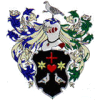
|
|||
|
| Home |
| About |
| Hobbies |
| Software |
| Hardware |
| ICT Hotlist |
| Purpose |

ICT-Hotlist Topic
Using Powershell to show all links on a web page
This Powershell script can be used to to display all the links on a web page. Just replace the string value $Uri with your web page address and run the script via the Powershell command line or use Windows PowerShell ISE. The option "-UseDefaultCredentials" provides support for Single Sign On websites by using the credentials of the current user to send the web request.
# **************************************************************************
# * This Powershell script displays all the links from a website url *
# * (C)Copyright 2015 - 2024 vanSoest.it by Johan van Soest *
# **************************************************************************
cls
# Define the website page
$Uri='http://vansoest.it/v1/uk/default.asp?file=Hotlist.whc'
# Request the website page and store it for processing.
# Using default user credentials for Single Sign On sites such as SharePoint
$WebPage = Invoke-WebRequest -Uri $Uri -UserAgent PowerShell -UseDefaultCredentials
# Display the links section and list each url on one line
$WebPage.Links | Foreach {$_.href }
This cmdlet was introduced in Windows PowerShell 3.0. thus integrated in Windows 8.x and Windows Server 2012 or newer. It is also available as a separate installation for Windows 7 Service Pack 1, Windows Server 2008 Service Pack 1 and Windows Server 2008 R2 with Service Pack 1.
# * This Powershell script displays all the links from a website url *
# * (C)Copyright 2015 - 2024 vanSoest.it by Johan van Soest *
# **************************************************************************
cls
# Define the website page
$Uri='http://vansoest.it/v1/uk/default.asp?file=Hotlist.whc'
# Request the website page and store it for processing.
# Using default user credentials for Single Sign On sites such as SharePoint
$WebPage = Invoke-WebRequest -Uri $Uri -UserAgent PowerShell -UseDefaultCredentials
# Display the links section and list each url on one line
$WebPage.Links | Foreach {$_.href }
You may vote your opinion about this article:





Scripts and programming examples disclaimer
Unless stated otherwise, the script sources and programming examples provided are copyrighted freeware. You may modify them, as long as a reference to the original code and hyperlink to the source page is included in the modified code and documentation. However, it is not allowed to publish (copies of) scripts and programming examples on your own site, blog, vlog, or distribute them on paper or any other medium, without prior written consent.Many of the techniques used in these scripts, including but not limited to modifying the registry or system files and settings, impose a risk of rendering the Operating System inoperable and loss of data. Make sure you have verified full backups and the associated restore software available before running any script or programming example. Use these scripts and programming examples entirely at your own risk. All liability claims against the author in relation to material or non-material losses caused by the use, misuse or non-use of the information provided, or the use of incorrect or incomplete information, are excluded. All content is subject to change and provided without obligation.


 Back to the ICT-Hotlist...
Back to the ICT-Hotlist...